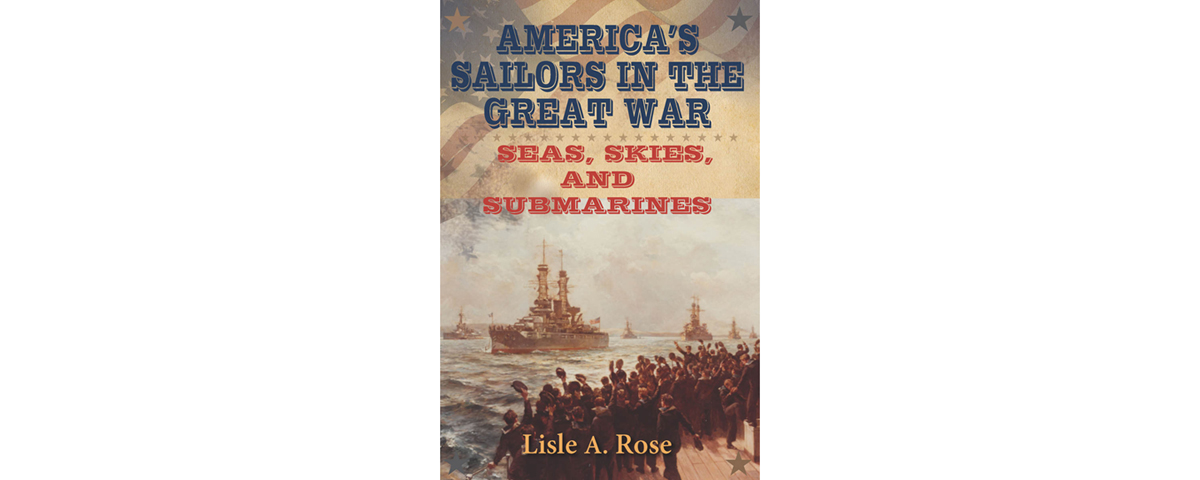America’s Sailors in the Great War: Seas, Skies and Submarines, by Lisle A. Rose, University of Missouri Press, Columbia, 2016, $36.95
Given the approaching centennial of America’s entry into World War I, it seems fitting historians should reexamine the nation’s participation in that epochal conflict. While most such works stress the activities of the soldiers, Marines and airmen who battled on and above the trenches of the Western Front, Rose has chosen to focus on the part played by the Navy.
Although the U.S. battle fleet didn’t engage in any major fleet actions during the war, the Navy nevertheless contributed to the Allied victory. That said, the Great White Fleet of capital ships so carefully built up by Theodore Roosevelt did have to adapt to an entirely new kind of war, one for which it had not been designed. It was the smaller warships—destroyers, subchasers, submarines, minesweepers, etc.—that were to see most of the action. The battleships made an appearance, but mainly as a deterrent to Germany’s High Seas Fleet, which would not sortie again until the war was over.
World War I prompted the U.S. Navy to develop new warships and new ways of using them. The conflict also witnessed the introduction of naval aviation in the form of seaplanes and flying boats. It had yet to mature into the carrier-based aviation that was to play so pivotal a role in the next war.
—Robert Guttman





